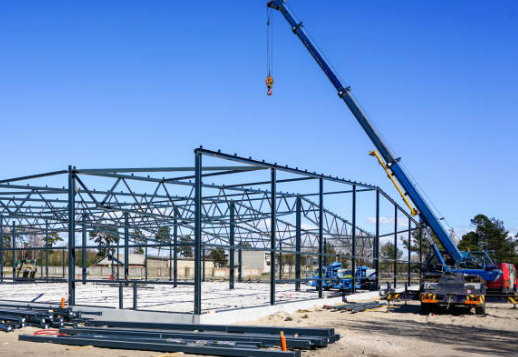
Posted on Wednesday, October 2, 2024
As the construction industry evolves, so too does the technology behind metal building components. From skyscrapers to industrial complexes and even prefabricated homes, metal parts are critical for creating strong, durable, and efficient structures. The future of these components is shaped by exciting innovations that enhance their performance and the processes by which they are made. In this blog, we’ll explore three key innovations that are revolutionizing the design and manufacturing of metal building parts: 3D printing of steel parts, advanced corrosion-resistant coatings, and new technologies that improve efficiency and durability.
3D printing, also known as additive manufacturing, is no longer limited to the realm of prototypes and small-scale models. The technology has made significant strides, particularly in the manufacturing of metal parts for building applications. Traditionally, creating metal components required cutting, welding, and joining multiple parts—a time-consuming process that often resulted in material waste. 3D printing changes this by allowing manufacturers to build components layer by layer, directly from digital models.
For metal building parts, 3D printing offers several advantages:
For example, manufacturers are using 3D printing to create steel parts with optimized strength-to-weight ratios, making them lighter and more resilient. This is especially useful in high-rise buildings and other structures where weight reduction is crucial for safety and performance. In the future, 3D printing could become a standard method for producing structural components, reducing both production time and costs.
Metal components in buildings, particularly in outdoor environments, are constantly exposed to elements that cause corrosion and degradation. Rust, moisture, and chemicals can compromise the structural integrity of metal parts over time. To address this, advancements in coating technology are playing a vital role in prolonging the lifespan of metal building parts.
Innovations in coatings include:
These advanced coatings not only extend the life of metal components but also contribute to environmental sustainability by reducing the need for frequent replacements and repairs. As these technologies evolve, we can expect buildings to become more resilient to weather and environmental wear, ensuring that metal structures remain strong and durable for decades.
The metal construction industry is experiencing a wave of technological innovation that is transforming how components are designed, manufactured, and assembled. The future of metal building parts is marked by the integration of automation, AI, and material science breakthroughs, all aimed at improving both efficiency and durability.
The integration of these technologies is transforming how metal parts are produced, making them more reliable, cost-effective, and sustainable. For example, roll forming machines equipped with advanced AI controls can produce highly precise building components at high speeds, ensuring that each piece meets exact specifications while minimizing waste. These innovations help manufacturers stay competitive in an industry that demands both speed and quality.
The future of metal building parts is bright, driven by innovations in 3D printing, advanced coatings, and cutting-edge production technologies. As 3D printing allows for more complex, efficient, and customized metal components, advanced coatings provide long-lasting protection against the elements, and new technologies improve the speed and precision of manufacturing, the metal building industry is poised for significant advancements.
These innovations not only enhance the durability and efficiency of metal parts but also contribute to a more sustainable and cost-effective construction industry. As the demand for stronger, more resilient structures grows, we can expect these technologies to play a crucial role in shaping the future of metal building components.
Whether you're a contractor, architect, or manufacturer, staying ahead of these trends will be key to thriving in the next generation of construction.

Understanding Coil IDs, Mandrel Sizing, and Shear Pin Safety in Uncoilers
Posted on Wednesday, October 1, 2025
Mismatched sizes can lead to machine damage, downtime, and safety hazards — often evidenced by a shear pin failure.

How Coil Tensile Strength Affects Roll Forming and How to Adjust Your Machine
Posted on Wednesday, October 1, 2025
Changes in tensile strength can significantly affect the finished profile, causing misaligned bends, uneven edges, and out-of-spec parts.

Why Paint Cracks on an Embossing Line Running Pre-Painted Coil and How to Prevent It
Posted on Wednesday, October 1, 2025
This issue not only affects the visual quality of the product but can also lead to increased scrap rates and customer complaints.

The Most Popular Standing Seam Metal Roof Panels in the U.S. — A Comprehensive Guide
Posted on Monday, September 29, 2025
In this post, we’ll explore what panel styles and sizes are most popular in the U.S